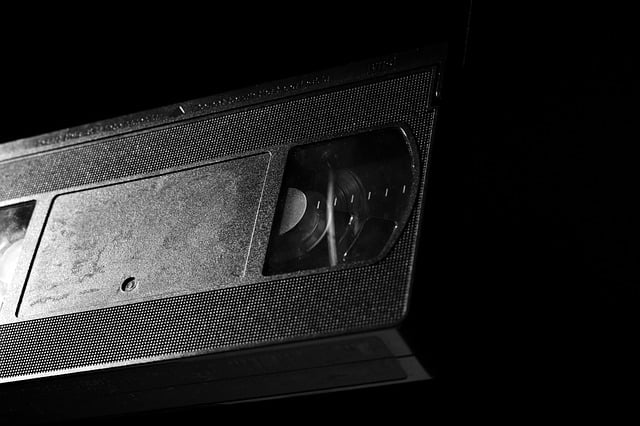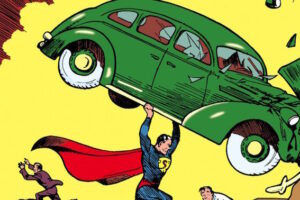10 Discontinued Video Formats That Were Left in the Past
When it comes to the media we create and consume, the formats we use are just as important as the content itself. Over the decades, video technology has evolved repeatedly to meet the changing needs of consumers. But with progress comes obsolescence, and many formats that were once cutting-edge have been relegated to the scrap heap of history. These are the relics of a bygone era—video formats that, for one reason or another, have faded into obscurity.
From VHS tapes to Betamax, these technologies were once the height of innovation, shaping how we watched movies, recorded memories, and shared stories. Yet, as newer, sleeker formats emerged, these old-school options were left behind, replaced by digital streaming and high-definition clarity. It’s a reminder of how quickly technology moves and how even the most revolutionary formats can become outdated in the blink of an eye.
10.VHS (Video Home System)

When it comes to outdated video formats, VHS tapes are often the first thing that comes to mind. When they debuted in the 1970s, few could have predicted just how much they would revolutionize the way we consume media—and even how movies are made. Before VHS, the idea of watching a full-length movie in your living room, let alone owning a copy, seemed like science fiction. But suddenly, it became a reality.
By the 1980s, the home video market exploded. Video rental stores popped up everywhere, becoming a staple of neighborhoods and shopping centers. This trend continued into the 1990s, with many films finding a second life—and a second wave of revenue—through VHS releases. The format also gave independent filmmakers a way to bypass big studios and distribute their work directly to audiences.
But like all good things, the era of VHS eventually came to an end. DVDs and on-demand streaming quickly took over, offering better quality and convenience. Today, VHS tapes are mostly a nostalgic relic, fondly remembered by those who miss the simplicity of popping in a tape and rewinding it before returning it to the video store. It’s a reminder of how far we’ve come—and how quickly technology can change the way we experience the world.
9.Betamax
Whenever something becomes a hit, there’s always a rival waiting in the wings, ready to challenge its dominance. Think Apple vs. Samsung, Coca-Cola vs. Pepsi, or, in the world of video formats, VHS vs. Betamax. For a while, these two formats were locked in a fierce battle for supremacy, each vying to become the standard for home video.
Betamax, launched by Sony in 1975, hit the market just a year before VHS. It boasted superior video and audio quality, and by the early 1980s, it had carved out a significant share of the booming videocassette market. But despite its technical advantages, Betamax had one major flaw: it couldn’t match VHS when it came to recording time. VHS tapes could hold more content, making them far more appealing to everyday consumers and amateur filmmakers.
Another factor in VHS’s favor was its open licensing model. While Betamax was exclusively controlled by Sony, VHS allowed other companies to produce their own tapes and players. This led to wider availability and lower prices. To make matters worse for Betamax, major film studios began releasing their movies exclusively on VHS, sealing its fate. By 1993, Sony threw in the towel, discontinuing Betamax and ending the format war.
It’s a classic tale of innovation, competition, and the unpredictable nature of technology. While Betamax may have been the better format on paper, VHS won the hearts—and living rooms—of consumers everywhere.
8.Video8/Hi8
Keeping with Sony for another entry, let’s talk about another one of their defunct video formats, specifically Video8, later known as Hi8. Over the last few decades, the advent of home movies has only developed in terms of their technology and user convenience. However, long before you could record your child’s first day of school or a family reunion on your iPhone, you needed a consumer-grade camcorder.
This is where Video8 enters the picture, billed as a compact and affordable option for the average consumer to capture life events on video. Video8 was promoted for having a convenient size, as well as its impressive video quality, both of which were superior to other formats at the time. The format stuck around for a good while following its introduction in the late 1980s and early 1990s, but eventually began a steady decline. Sadly, Video8, as well as its successor Hi8, just couldn’t keep up with the rise of MiniDV and other digital recording formats.
The switch from analog to digital simply made things easier for video consumers, offering far more convenience and overall quality. Unsurprisingly, by the early 2000s, Sony had discontinued the production of Video8/Hi8 camcorders, making the format officially defunct.
7.LaserDisc
When it comes to disc-based video formats, the first ones people think of are DVDs with many forgetting their original predecessor. That would be LaserDisc, originally released in 1978 and advertised as the next leap forward in home media technology.
The format resembled a DVD but was the size of a vinyl record and required a special LaserDisc player for people to watch them. This larger size allowed for not only immensely superior video and audio quality when compared to VHS but also additional bonus features and director’s commentary tracks. These factors made LaserDisc a favorite of avid collectors and cinephiles of the 1990s who wanted the best possible version of their favorite films. However, while the format had many advantages, its shortcomings were simply too great to ignore, resulting in its downfall.
Unlike VHS tapes, the cumbersome size of the LaserDiscs made them rather awkward to store and easy to damage. Additionally, much like a vinyl record, if you were watching a particularly long movie, you’d need to take the disc out and flip it. All of this, plus the heftier price tag attached to them, resulted in the LaserDisc remaining as a niche product, never able to replace VHS. Nowadays, LaserDiscs are remembered only by hardcore video format collectors and by those entranced by the oddities of past decades.
6.MiniDV
In the late 1990s and early 2000s, MiniDV tapes were the kings of the video world. These compact tapes, loaded into camcorders, were the video equivalent of audio cassettes—small, portable, and perfect for capturing life’s moments. Loved by amateur videographers, indie filmmakers, and journalists alike, MiniDV was praised for its sharp image quality and affordability. For a while, it seemed like everyone had a MiniDV camcorder tucked away in their bag.
The early 2000s marked the golden age of MiniDV. It was the go-to format for everything from family vacations to independent film projects. One of its biggest selling points was its compatibility with home computers, making it easy to transfer footage and dive into digital editing. If you rummage through old boxes today, you’ll probably stumble across a few dusty MiniDV tapes, relics of a time when they were indispensable.
But as technology advanced, MiniDV’s reign came to an end. The rise of smartphones with built-in cameras, like the iPhone, made it unnecessary to buy tapes or carry a separate camcorder. At the same time, modern cameras began using SD cards, which could store far more footage than MiniDV tapes ever could. By the mid-2000s, MiniDV’s popularity had plummeted, and by the 2010s, the format was officially obsolete.
It’s a story of innovation and obsolescence, a reminder of how quickly technology can change the way we capture and share our lives. While MiniDV may be a thing of the past, it played a crucial role in shaping the way we think about video—and paved the way for the devices we use today.
5.VCD (Video CD)
It should be clear by now that the 1990s was a pivotal time for the home video market, especially with digital formats quickly replacing analog ones. Various companies were racing to develop the format that would eventually unseat VHS tapes as the dominant format, resulting in some fascinating developments. We already mentioned the rise and fall of LaserDiscs, but around the same time, there was another disc-based format looking to break through known as VCD.
Video CD AKA VCD debuted in the early 1990s and could hold up to 74 minutes of video and audio. The format attained solid success in Asia mostly due to its affordability and compatibility with most CD players. The VCD format also proved to be a perfect way to distribute the music videos of various solo and group performers.
Sadly, when DVDs made their debut, the days of the VCD quickly became numbers for a litany of reasons. Whereas VCDs could only fit 74 minutes of content, DVDs could hold far more content, as well as boasting vastly superior audio-visual quality. While the format stuck around for a while, particularly in Asia, the advent of DVDs, Blu-Ray discs, and online streaming proved to be the final nail in the coffin of VCDs.
4.D-VHS (Digital VHS)
A big trend on this list has been formats that failed in the pursuit of defeating and dethroning VHS tapes as the dominant video format. Another example of one of these failed formats was Digital VHS AKA D-VHS, which was built to capitalize on the growing HDTV market. The product was predicated on its ability to record HDTV broadcasts, as well as showcase movies, in their desired high quality. Unfortunately, this trait proved insufficient as soon as DVDs, and later Blu-rays, hit the scene and revolutionized the home video market.
Despite the best efforts of those behind it, D-VHS wasn’t able to keep up with the trajectory of the business and the ever-evolving tastes of consumers. DVDs simply offered better video and sound quality, as well as the ability to store more content like commentary tracks and special bonus features.
Add to that, the lack of movies available on D-VHS greatly limited the format’s appeal to consumers. There was also the high cost of the D-VHS tapes, as well as the video player itself, which made it difficult for the format to break through. Had DVDs not emerged at the end of the 90s, then the format might’ve had more of a fighting chance for prolonged mainstream success.
3.U-matic
Now, let’s shift our focus to the world of professional broadcasting and a largely forgotten video format: U-Matic. Introduced by Sony in the early 1970s, U-Matic tapes were a game-changer for video production. With their high-quality video and compact size, they quickly became the gold standard for television studios. The format was also incredibly user-friendly and worked seamlessly with the editing systems of the time, making it a favorite for streamlining production workflows. U-Matic even played a role in filmmaking, with the raw cut of Apocalypse Now famously preserved on these tapes.
But as the mid-1980s rolled around, U-Matic’s dominance began to wane. Betacam, with its superior picture quality, and VHS, with its affordability, started to take over. By the 1990s, U-Matic had faded into obscurity, no longer the go-to format for television production. It’s a classic example of how technology evolves, with newer, better formats pushing older ones into retirement.
U-Matic may be a relic of the past, but its impact on professional video production can’t be overstated. It paved the way for the formats we use today, a reminder that even the most groundbreaking technology can eventually be replaced by something newer and shinier.
2.DVCPRO
Panasonic, best known for its various electronic consumer products, unleashed DVCPRO back in the mid-1990s. The format offered both high-quality video and audio recording in a sturdy tape format, making it a desirable format for those in professional video production.
Following its debut, broadcasters, filmmakers, and many others quickly adopted DVCPRO, making it the industry standard for quite a while. A major advantage of the format was how when recording audio it would prevent audio drifting, meaning the sound and viduals would be perfectly synced. Additionally, its durable quality made it perfect for outdoor filming, especially field production when it came to sports like football.
However, DVCPRO soon had competition in the form of digital recording technologies like P2 and XDCAM, both of which offered very enticing features of their own. They both benefitted from the advent of solid-state media, which is a type of computer storage media that stores data electronically and has no moving parts. This technological leap forward led to both formats boasting faster workflows, and higher capacities, making them perfect for fast-paced video production. By the time the mid-2000s came around, countless broadcasters and video production outlets had pivoted away from tape-based formats like DVCPRO, cementing its obsolete status.
1.8mm Film
Our journey through the world of obsolete video formats ends with a trip back to the 1930s and the invention of 8mm film. Created by Eastman Kodak, this compact, user-friendly format quickly became the go-to choice for small productions and capturing family memories. Over time, it evolved into improved versions like Super 8mm, which offered better sound and image quality, making it even more appealing for documenting birthdays, vacations, and everyday moments.
Back then, there were no camera phones or disposable cameras—8mm film was the best way to preserve life’s highlights. But as we’ve seen time and again, no format stays on top forever. When VHS and consumer camcorders arrived in the 1980s and 1990s, 8mm film began to lose its appeal. VHS was more convenient, offered higher audio-visual quality, and didn’t require the same level of effort to use. By the early 2000s, 8mm film was largely obsolete, surviving only in niche markets where filmmakers and artists sought its vintage aesthetic.
It’s a story of innovation and nostalgia, a reminder of how technology shapes the way we capture and share our lives. While 8mm film may no longer be mainstream, its legacy lives on in the hearts of those who cherish its old-school charm.
























